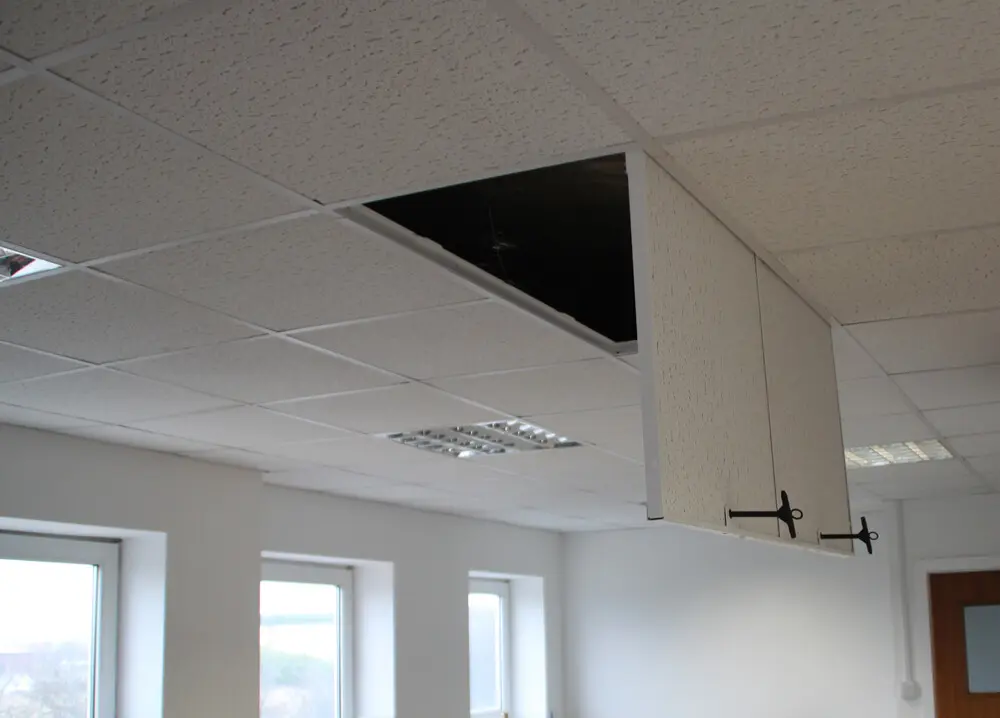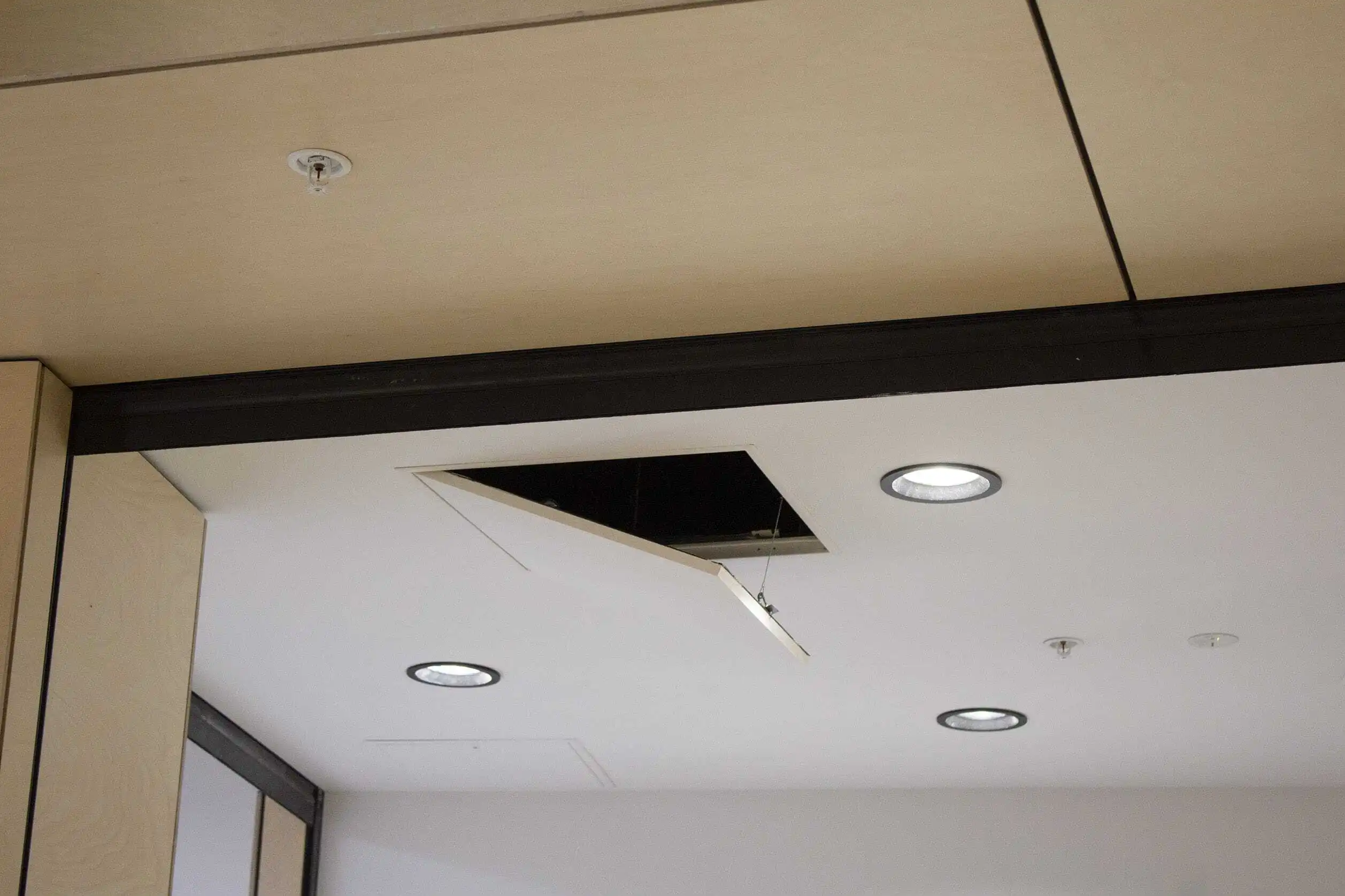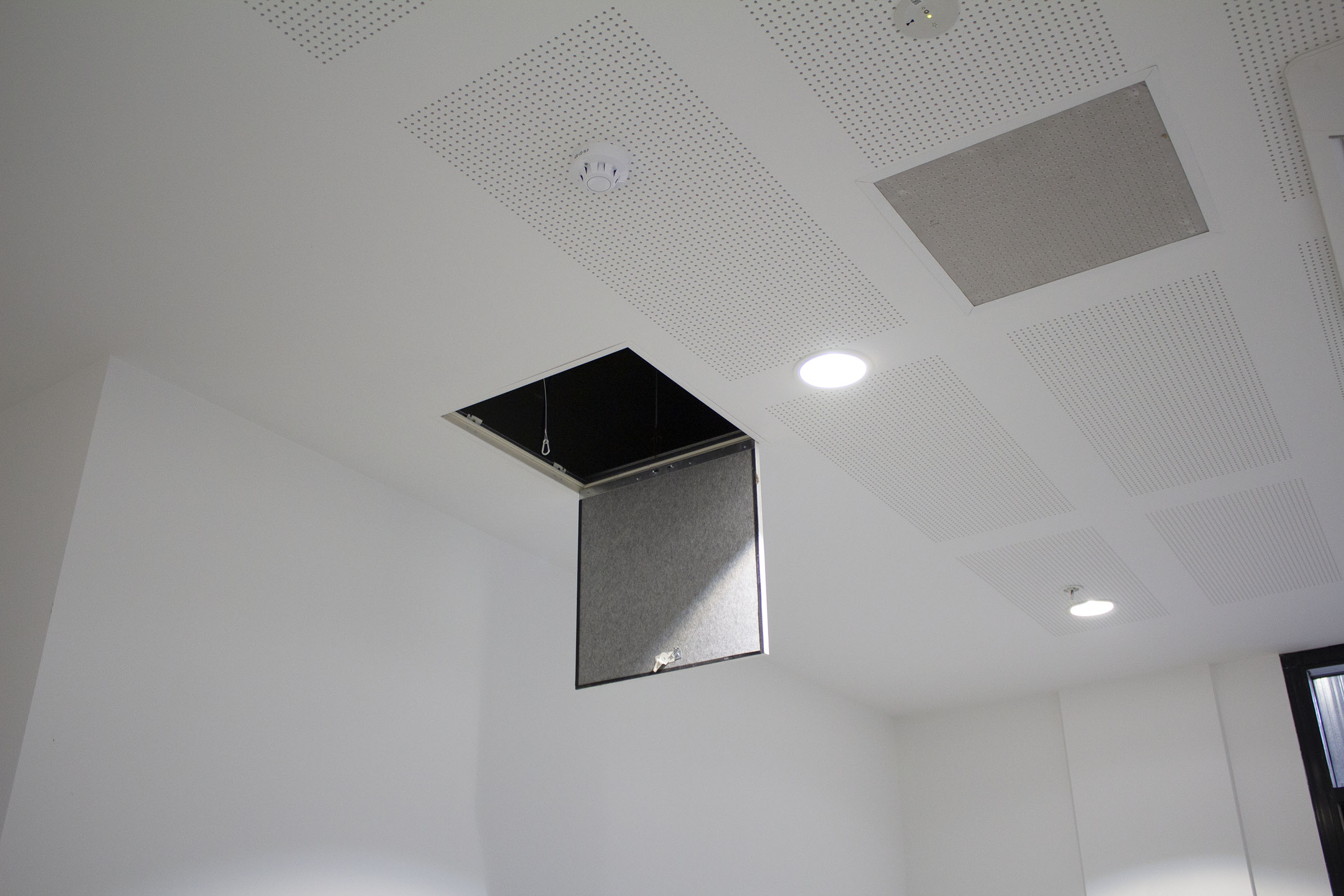PRANCE metalwork is a leading manufacturer of metal ceiling and facade systems.
Ceiling Access Panel Solutions for Easy Maintenance
Catching ceiling problems can become difficult because internal systems like wiring and plumbing and HVAC units often lack proper access. The installation of ceiling access panels delivers both convenience for maintenance operations and the preservation of your interior design disruptive elements. These devices provide accessible entrances in residential units while maintaining appealing stylistic qualities and functional requirements, thus being critical design elements for modern facilities.
1. What Ceiling Access Panels Are and Why They Matter

Ceiling access panels are specially designed openings in ceilings that provide direct entry for maintenance and inspection of hidden systems such as wiring, plumbing, and HVAC components. They allow both facility professionals and homeowners to perform repairs or inspections efficiently, without the need to remove large sections of the ceiling or disrupt interior finishes.
Modern building complexity creates an absolute need for access panels. Ceiling access panels provide convenient access to concealed systems, which both shorten servicing periods and minimize damage to structures. For a step-by-step video on how ceiling access panels are manufactured and installed, watch the video below.
2. Types of Ceiling Access Panels for Every Need
Flush-Mounted Panels
Flush-mounted panels match the ceiling level exactly, so they blend harmoniously with surrounding borders. These panels work perfectly for environments that prioritize a unified visual look.
Fire-Rated Panels
Fire-rated access panels are tested as complete assemblies to recognized standards such as ASTM E119 and UL 263, with ratings typically ranging from 30 to 120 minutes. These panels can withstand temperatures up to 1,000°F (540°C) depending on the rating, making them suitable for commercial kitchens, mechanical rooms, and areas with sprinkler systems. They provide both regulatory fire-safety compliance and convenient access for emergency or routine maintenance.
Acoustic Panels
Acoustic access panels use high-density insulation with sound-absorbing cores to achieve noise reduction ratings (NRC) of 0.6–0.9. These panels are perfect for conference rooms, theaters, or recording studios where controlling sound transmission is critical.
Removable Panels
These panels allow complete accessibility because users can easily detach them when needed. These panels are standard in environments that need regular upkeep.
3. Material Options and Performance Comparison
Aluminum
Commonly deployed because aluminum irregular ceiling tiles remain lightweight while also providing durability and resistance to corrosion. These panels thrive in wet environments that include bathrooms along kitchens.
Steel
Steel panels deliver durable protection making them suitable choices for industrial as well as commercial buildings. Heavy operations and extended durability are characteristics of these access panels.
Plastic
Affordable plastic panels offer multiple installation options due to their versatility. Due to their light weight and ability to resist moisture, residential areas benefit from using these panels for installation.
Gypsum
As components of drywall systems, gypsum access panels create continuity across ceiling surfaces. These panels find use in homes for residential interiors that stress appearance.
4. Advantages of Using Ceiling Access Panels
Quick and Simple Installation
Ceiling access panels are designed for straightforward installation, with manufacturers providing prefabricated frames, pre-made holes, or clamp-support systems to simplify setup.
Standard panel sizes range from 12"x12" to 24"x24", while custom dimensions are available for unique ceiling layouts. For drywall ceilings, panels are typically secured with screws into metal studs, whereas suspended ceilings may use spring clips or magnetic frames.
To ensure proper performance, measure the opening accurately, confirm the panel swings or slides freely, and avoid misalignment with the ceiling grid or insufficient anchoring, which can lead to sagging or rattling. These steps make installation efficient while maintaining ceiling integrity and aesthetics.
Time-Saving Maintenance
The installation of access panels saves maintenance professionals from the need to take down complete ceiling pieces because they efficiently provide access. Direct access through panels allows technicians to reach necessary locations, which results in both speedier maintenance and reduced expenses.
Enhanced Aesthetic Appeal
Contemporary access panels feature standardized designs, which allow them to fit unnoticeably into diverse ceiling layouts. Certain panels come with features that allow users to blend paint or wall-covering materials with their environment.
Versatility
Fire-rated safety panels and acoustic noise-control options join accessible panel solutions that cover diverse operational needs.
5. Applications: Residential, Commercial, Industrial, and Healthcare
Residential: Kitchens and Bathrooms
Use moisture-resistant aluminum or plastic panels to prevent corrosion or mold growth. Flush-mounted panels maintain clean lines while allowing quick access for plumbing and HVAC maintenance.
Commercial: Offices and Retail Spaces
Fire-rated steel panels combined with acoustic options help protect electrical systems and minimize noise disturbances in open areas such as offices, hotels, or shopping malls. Proper sizing ensures easy access without compromising aesthetics.
Industrial Environments
A durable type of access panel gives factories and warehouses the ability to reach crucial machinery and electrical systems. Heavy-duty materials make up preferred panels within such environments.
Healthcare: Hospitals and Laboratories
Select panels with locking mechanisms, smooth surfaces for sanitation, and fire-resistance certification. Panels should be placed near medical gas pipelines or critical electrical systems to allow maintenance without disrupting patient care.
Common Installation Pitfalls
6. Selecting the Right Panel: Size, Features, and Security
Ceiling Access Panel Sizing Guidelines
Selecting the right panel size ensures maintenance efficiency and minimal ceiling disruption. Residential areas often use 12"x12" to 18"x18" panels for HVAC or plumbing access, while commercial or industrial spaces may require 24"x24" to 36"x36" ceiling access panels for electrical or mechanical system inspection. For large machinery or multiple conduits, consider custom-sized panels to provide full reach without removing additional ceiling sections.
Aesthetic Integration
The design of present-day access panels prioritizes ceiling integration, which sustains the room's visual consistency. Flush-mounted and paintable panels represent the most chosen options for access panel solutions.
Enhanced Security Considerations
For restricted areas or sensitive installations, ceiling access panels can include locking mechanisms, tamper-proof fasteners, or electronic access controls. In hospitals or laboratories, these features prevent unauthorized access to medical gas pipelines or electrical systems, ensuring both safety and regulatory compliance.
7. Maintenance Tips for Ceiling Access Panels

Regular Cleaning
The functional ability of panels and their aesthetic appearance depend on proper cleaning maintenance. A slightly wet cloth allows periodic removal of dust along with grime from the panels.
Inspect Hinges and Locks
Regular inspection of doors and locks will prevent operational problems. Move necessary mechanical components using lubrication to achieve proper operational performance.
Replace Damaged Panels
Replace ceiling access panels right away to preserve the combination of operational functionality and visual appeal when visible damage or wear patterns appear.
8. Future Trends in Ceiling Access Panels
The evolution of technology results in smarter and more effective access panels today. The upcoming development of these panels will combine automation features with building control capabilities and enhanced structural materials components. Manufacturers now focus on sustainable materials and eco-friendly processes alongside major trends in sustainability.
FAQs
Q1. How to install a ceiling access panel?
Installing a ceiling access panel involves measuring, cutting the opening, securing the frame, and fitting the door. Proper alignment and fastening ensure smooth operation, durability, and integration with drywall or gypsum ceilings.
Q2. Can access panels be added to existing gypsum ceilings?
Yes, access panels can be retrofitted into existing gypsum ceilings. Measure and cut the opening precisely, reinforce surrounding drywall if needed, and attach the panel frame securely. Panels designed for gypsum ceilings blend seamlessly while providing access to electrical, plumbing, or HVAC systems without damaging the ceiling.
Q3.Are there access panels specifically for high-moisture areas?
Yes, moisture-resistant or coated gypsum and drywall access panels prevent mold and corrosion in bathrooms, kitchens, or laundry rooms. Materials like aluminum or treated composites ensure durability in humid environments.
Q4: Can access panels for gypsum ceilings be painted or finished to match the surrounding ceiling?
Yes, most gypsum access panels are paintable or texturable to match existing ceilings. Smooth edges and removable covers allow finishing without affecting the panel’s fit or function. Proper painting or texturing maintains aesthetic continuity while ensuring easy access for maintenance, making them suitable for both residential and commercial spaces where visual consistency is important.





















